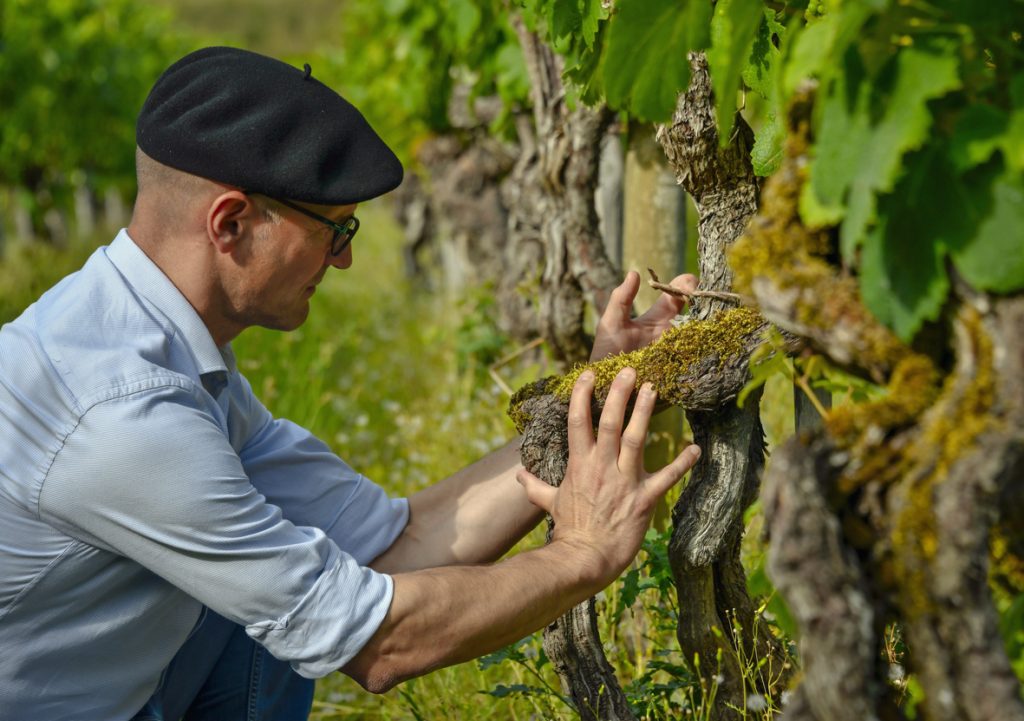Liz Sagues recaps a fascinating talk with Olivier Bourdet-Pees of Plaimont Producteurs — and the surprising turn the conversation took when bureaucracy entered the frame.
What was already a fascinating and highly relevant session on ampelography on 18th March was suddenly galvanised, demonstrating just how effective the Circle’s Let’s Talk About… online discussions can be.
Before the Q&A session began, Olivier Bourdet-Pees, Managing Director and head winemaker at the innovative Plaimont Producteurs co-operative in the foothills of the Pyrenees, had already covered a remarkable range of topics – from his region’s particular climate, which provides vines with a generous supply of essential water, to the extraordinary diversity of vine varieties offering hope for the future in the face of climate chaos; from the reasons for preserving fragile plots of ancient vines, even if they currently appear unpromising, to the need to adapt viticulture, winemaking, and the wines themselves to changing conditions.
Then, as the virtual floor opened to the audience, came an apparently simple question from committee member Wink Lorch: did the time taken by France’s regulatory body, the INAO (Institut national de l’origine et de la qualité), to accept innovation present a problem?
Olivier’s previously restrained, serious demeanour gave way to passion. He loved the concept of appellation, he insisted, but the INAO’s beliefs were too firmly rooted in established practices. “They don’t see that solutions from the past are maybe no good now,” he emphasised, arguing that the expression of Tannat – currently the sole permitted grape of the important South-West France appellation Madiran – had changed dramatically in recent decades. In the 1970s, fully ripe Tannat produced wines at 12–12.5% alcohol. Now, 14% or 15% is the norm.
The answer to soaring alcohol levels wasn’t to be found in cellar technology, such as acidification, as the INAO suggested. Instead, support was needed for changes in vine exposition – favouring north- and east-facing sites rather than the INAO’s still-preferred south-facing ones. And, crucially, the inclusion of another grape alongside Tannat in Madiran.
Which brought Olivier to Tardif, a grape now enjoying a hugely important revival thanks to Plaimont’s research and experimentation. “It was impossible to get it ripe two centuries ago. It is very early budding, very late ripening, with a long cycle,” he explained. It wasn’t ready to harvest until October, even November, and growers understandably abandoned it. “It wasn’t the solution of the moment.” But, he argued, Tardif’s moment is now.
Plaimont’s experts discovered two plants in the 200-year-old pre-phylloxera vineyard of the Péydebernade family – a site that is an astonishingly important resource for ampelographers and has, uniquely, been formally classified as a historic monument by the French government. In 2002, Tardif became one of the 39 varieties planted in Plaimont’s vine conservatory. Its potential was studied over the next six years, followed by nearly a decade of micro-vinifications that demonstrated how well it could perform in modern wines.
It was time, Olivier and his colleagues told the INAO, to be granted permission to produce commercial wine from it. That permission was granted – but only for use in Vin de France. However, Plaimont pleaded, Tardif was central to the identity of the Saint Mont appellation and must be permitted within the AOC.
The rebuttal from the INAO was staggering: “We were told that with another 20 years’ experience we might be allowed to use it.
“This grape was born here, and we found it again in our AOC. All the growers want it for their future. We know everything about it.” His frustration was palpable…
The first March Let’s Talk About… session introduced Alessandro Masnaghetti, Italy’s ‘Mapman’, to a large and appreciative audience, whose understanding of wine region maps was transformed by his broad and detailed explanations.
If you missed these two excellent sessions, you can catch up on the Circle’s YouTube channel (links available in the members’ section of the Circle website).

